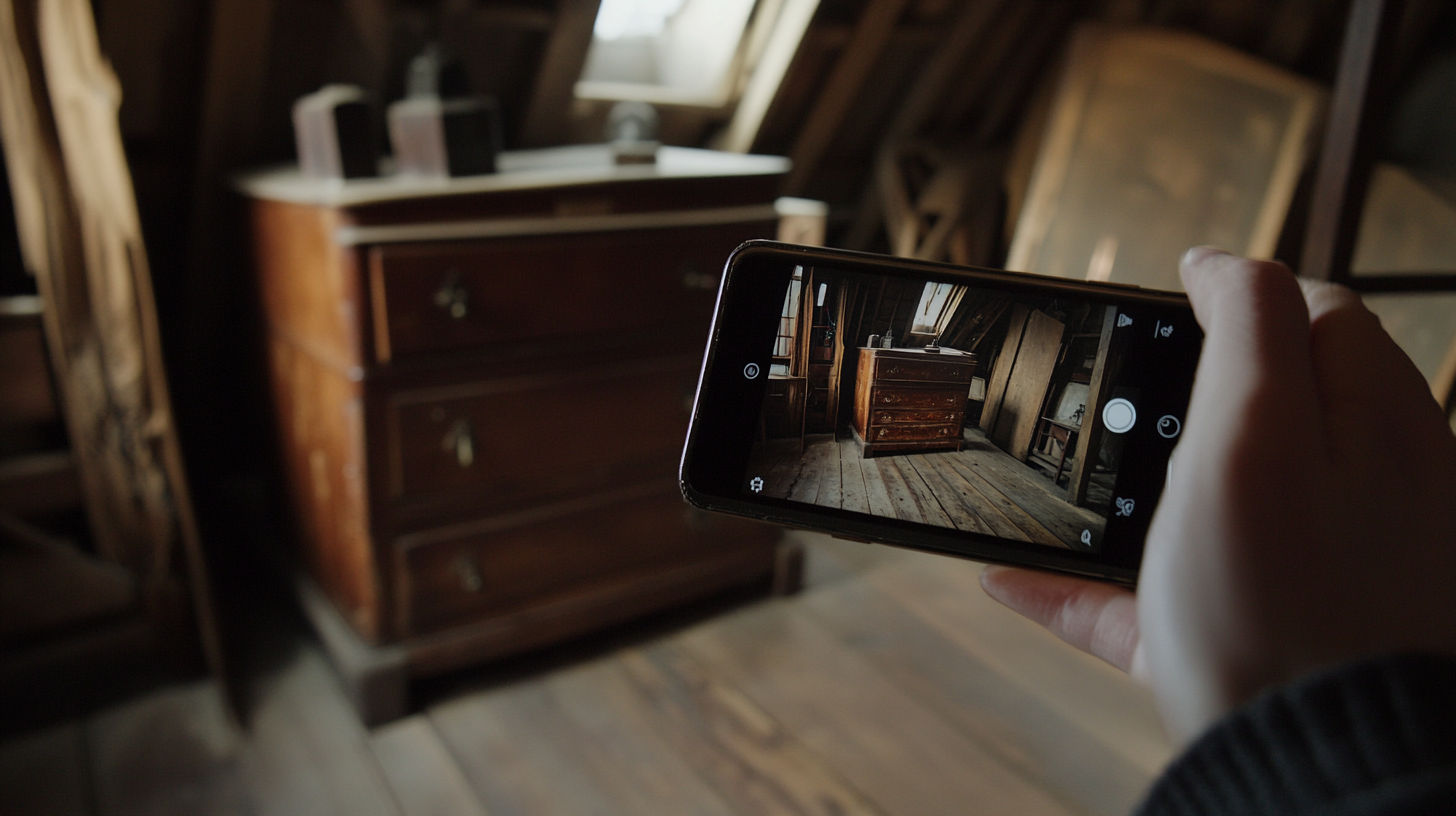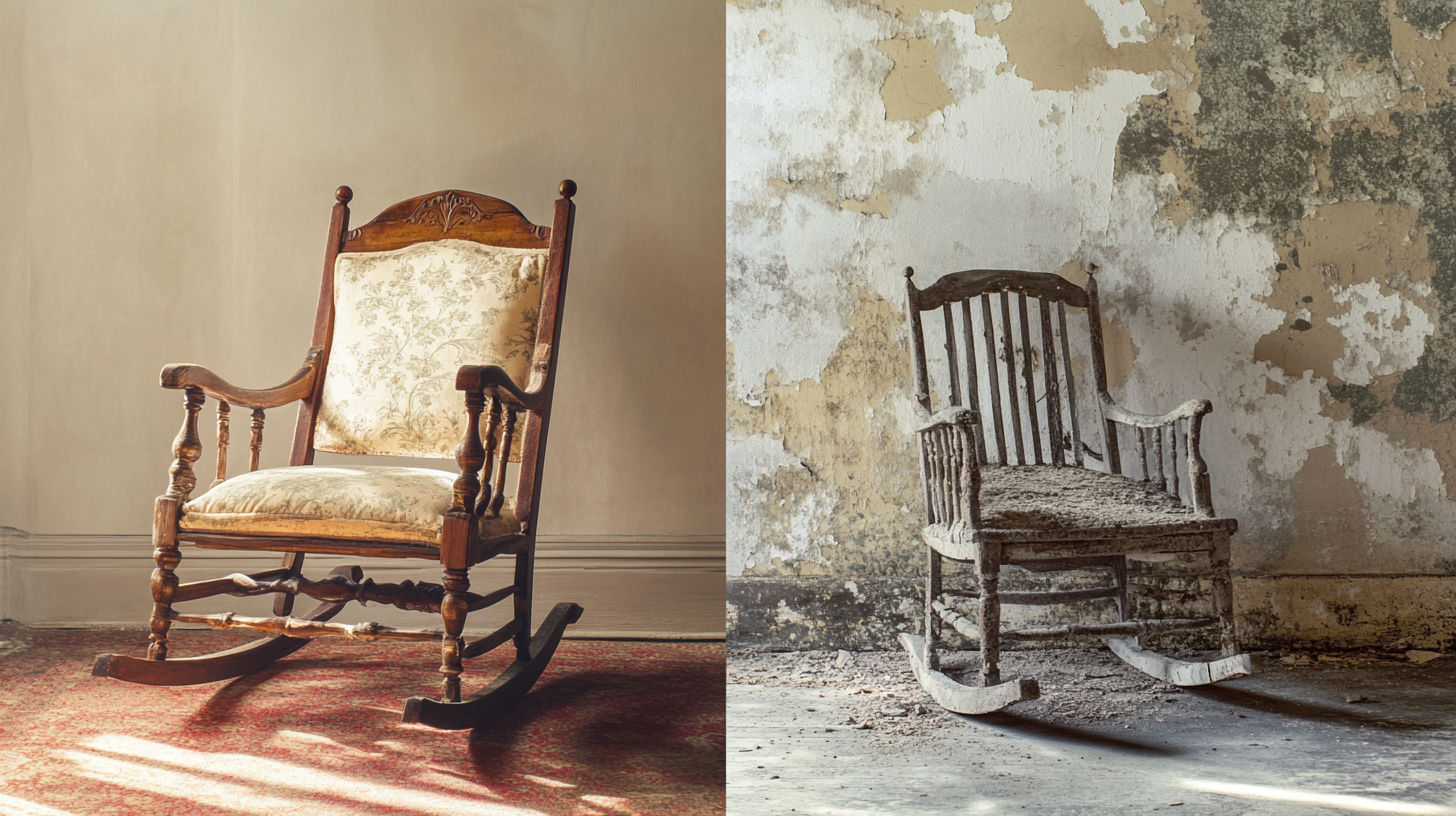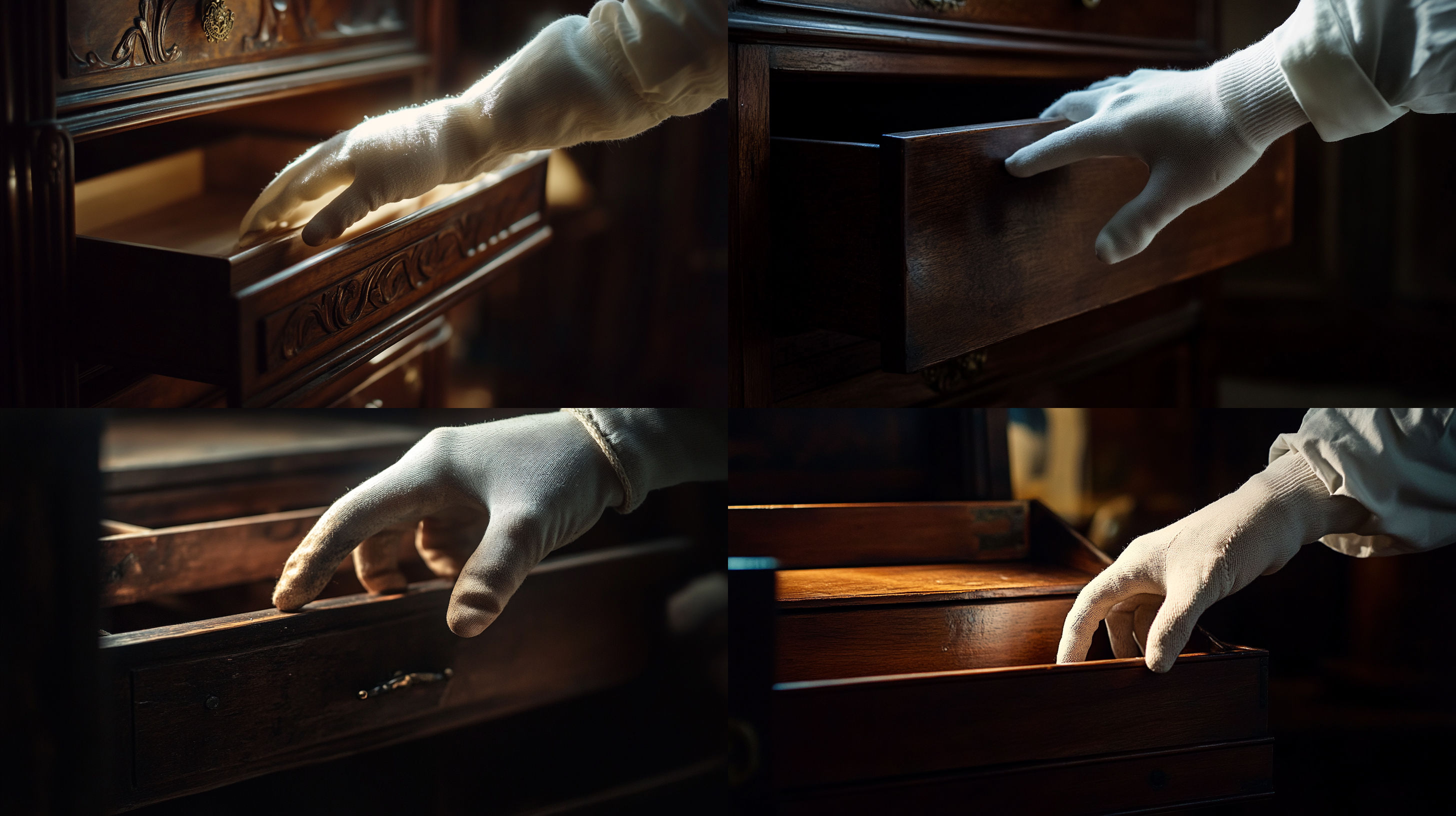Introduction to Antique Furniture Valuation
This comprehensive guide will walk you through the essential steps to value antique furniture like a professional, from identifying key characteristics to understanding the market factors that impact worth. While professional appraisers bring years of expertise to their evaluations, you can learn the fundamental techniques they use to get a reasonable estimate of your furniture’s value.
Key Antique Furniture Value Factors
Identifying Antique vs. Vintage Furniture
The term “antique” traditionally refers to items that are at least 100 years old, though some collectors and dealers may use less strict definitions. “Vintage” typically describes items between 40-99 years old. Understanding where your furniture falls on this spectrum is the first step in the valuation process.
Age Determination Techniques
To determine the age of a furniture piece, examine these key indicators:
Construction Methods: Hand-cut dovetail joints, irregular saw marks, and square or rectangular wooden pegs often indicate pieces made before 1860.
Materials Used: Different wood types were popular in different periods. For example, mahogany was commonly used in the 18th and early 19th centuries, while oak became prevalent in later Victorian pieces.
Hardware: Original hardware can be a strong indicator of age. Look for hand-forged nails, cast brass pulls, and other period-appropriate fittings.
Patina: The natural aging of wood creates a distinct patina that’s difficult to replicate artificially. A genuine aged surface has a character that develops over decades.
Evolution of Furniture Styles
- 1700-1780
Queen Anne & Chippendale
Characterized by curved lines, cabriole legs, and delicate ornamentation. These pieces, when authentic, can command premium prices in today's market. - 1780-1830
Federal & Empire
Featuring straighter lines, classical motifs, and often incorporating inlay work. American Federal pieces by known cabinetmakers can be highly valuable. - 1830-1900
Victorian Era
Known for heavier, ornate designs with elaborate carvings and dark finishes. This period included various revival styles including Gothic, Rococo, and Renaissance. - 1900-1925
Arts & Crafts Movement
Emphasized simple forms, visible construction methods, and natural finishes. Mission style furniture by makers like Stickley can be extremely valuable. - 1925-1940
Art Deco
Featuring bold geometric designs, exotic woods, and innovative materials. High-end Art Deco pieces continue to appreciate in value.
Key Factors That Determine Antique Furniture Value
1. Provenance and Authentication
The history of ownership, or provenance, can significantly impact an antique’s value. Furniture with documented history, especially pieces owned by notable figures or from important historical contexts, often command premium prices. Authentication documents, receipts, or certificates from respected authorities can help establish provenance.
2. Maker and Origin
Furniture created by recognized craftsmen or manufacturers typically holds greater value. Look for maker’s marks, labels, or signatures that can identify the creator. American craftsmen like Gustav Stickley, Duncan Phyfe, or companies like Kittinger are highly sought after by collectors.
3. Condition Assessment
The condition of antique furniture is perhaps the most critical factor in determining its value. While some patina and wear are expected (and even desirable), significant damage can dramatically reduce worth.
Antique Furniture Condition Assessment
Check applicable conditions to help determine value impact
- Original finish is intact and well-preserved
- All hardware is original to the piece
- No significant cracks, splits, or structural damage
- Drawers and doors function properly
- Original upholstery present (if applicable)
- No signs of insect damage or active infestation
- All carving and decorative elements are intact
- No inappropriate repairs or restoration work
4. Rarity and Desirability
Unusual designs, limited production runs, or pieces that represent significant innovations in furniture design generally have higher values. Similarly, trends in collecting can affect desirability—currently, mid-century modern pieces are experiencing strong demand while heavily ornate Victorian furniture has seen lower interest in recent years.
5. Quality of Materials and Craftsmanship
High-quality materials and exceptional craftsmanship increase a piece’s value. Furniture made with exotic or premium woods, hand-carved details, and superior construction techniques will typically be worth more than mass-produced items.
Typical Value Ranges by Furniture Type
Current market ranges based on good to excellent condition
</tbody>
</table>
Research and Valuation Methods

Comparative Market Analysis
One of the most effective ways to determine value is to research what similar pieces have sold for recently. This approach provides real-world data on market demand and pricing.
Resources for market research include:
Auction Records: Major auction houses like Sotheby’s, Christie’s, and Bonhams publish past sale results online. Specialized auction houses like Fontaine’s often focus more specifically on antiques.
Online Marketplaces: Platforms like 1stDibs, Chairish, and even eBay can provide insights into current asking prices and sold items.
Antique Price Guides: Published reference guides often list historical values for specific furniture styles and makers.
Remember that asking prices are not the same as selling prices—focus on completed sales whenever possible for the most accurate valuation.
Consulting Reference Materials
Specialized books and online databases can help you identify specific styles, makers, and historical periods. The more you know about your piece, the more accurately you can assess its value.
Recommended reference books include:
- “Field Guide to American Antique Furniture” by Joseph T. Butler
- “Illustrated Dictionary of Antique Furniture” by Fred Hiller
- “Antique Trader Furniture Price Guide” (updated regularly)
Professional Appraisal Options
For valuable pieces or when certainty is important (for insurance or estate purposes), professional appraisal is recommended.
Types of professional appraisals include:
Auction House Appraisals: Many auction houses offer free evaluations in hopes of securing items for future sales.
Independent Appraisers: Certified appraisers with credentials from organizations like the American Society of Appraisers or International Society of Appraisers provide detailed written valuations.
Antique Dealer Consultations: Experienced dealers can often provide ballpark estimates, though they may have a vested interest if they’re potential buyers.
Online Appraisal Services: Virtual appraisals based on photographs and descriptions offer convenience but may lack the precision of in-person evaluation.
Restoration Considerations and Value Impact
When to Restore
Restoration is typically justified in these circumstances:
- To address structural issues that threaten the piece’s longevity
- When damage significantly impairs functionality
- If deterioration is actively progressing (such as veneer lifting)
When to Preserve As-Is
Preservation may be preferable when:
- The piece has a desirable patina that would be lost with restoration
- The furniture has historical significance where original materials and construction are important
- Minor wear adds character without compromising integrity
Value Impact of Restoration
Professional, period-appropriate restoration by skilled craftspeople can maintain or even enhance value. However, poor-quality work, modern materials, or over-restoration can severely reduce a piece’s worth to collectors.

Market Trends and Selling Strategies
Current Market Trends
The antique furniture market has evolved significantly in recent years:
Style Preferences: Mid-century modern and Art Deco pieces have gained popularity, while heavily ornate Victorian furniture has experienced decreased demand.
Smaller Living Spaces: Compact, versatile pieces often command higher prices than large, formal furniture as urban dwellers have less space.
Sustainability Focus: Growing interest in sustainable living has increased appreciation for well-made antiques as environmentally responsible alternatives to new furniture.
Eclectic Design: Interior design trends increasingly incorporate antique statement pieces within contemporary settings, creating demand for unique, character-filled items.
Optimal Selling Channels
Different pieces may sell better through different channels:
High-End Auction Houses: Best for rare, exceptional quality, or historically significant pieces with potential values above $5,000.
Specialized Antique Dealers: Good for quality pieces with established market value, especially when authentication or expertise adds credibility.
Online Marketplaces: Effective for mid-range items with broader appeal; platforms like 1stDibs and Chairish target design-conscious buyers.
Local Consignment Shops: Practical for more common antiques where transportation costs would be prohibitive for long-distance sales.
Estate Sales: Useful for selling multiple pieces simultaneously, though typically at lower individual prices.
Maximizing Sale Value
To achieve the best possible price when selling:
Timing Matters: Some periods (like spring and fall) traditionally see more active buying in the antique market.
Comprehensive Documentation: Provide any available provenance, history, or supporting documentation that authenticates the piece.
Quality Photography: Clear, well-lit images from multiple angles help remote buyers assess condition and details.
Accurate Description: Honestly disclose age, condition issues, and any restoration to build buyer trust.
Patient Pricing: Setting an appropriate asking price and being willing to wait for the right buyer often yields better results than quick, discounted sales.
Common Questions About Antique Furniture Valuation
How can I tell if my furniture is actually antique?
True antiques are generally considered to be at least 100 years old. Look for signs of age and period-appropriate construction techniques:
- Hand-cut dovetail joints that are slightly irregular
- Signs of hand planing on unexposed surfaces
- Old growth wood with tight grain patterns
- Square or cut nails rather than modern wire nails
- Uneven wear consistent with age
- Original hardware with an aged patina
Wood shrinkage, patina development, and construction methods are difficult to fake convincingly, so carefully examining these elements can help authenticate potential antiques.
How do I get an antique furniture piece professionally appraised?
To get a professional appraisal, you have several options:
- Contact certified appraisers through organizations like the American Society of Appraisers or International Society of Appraisers
- Reach out to reputable auction houses; many offer free initial evaluations
- Attend appraisal events at museums or antique shows
- Some antique dealers offer appraisal services (though be aware they may have a vested interest if they’re potential buyers)
For formal appraisals needed for insurance or estate purposes, always use a certified appraiser who will provide a detailed written report following Uniform Standards of Professional Appraisal Practice (USPAP) guidelines.
Does refinishing antique furniture destroy its value?
Refinishing can significantly impact value, sometimes negatively. For museum-quality or rare antiques, the original finish (even with some wear) is often considered part of the piece's historical integrity and charm.However, for more common pieces or those with severely damaged finishes, professional refinishing that respects the original character may maintain or even enhance value. The key factors are:
- The quality and appropriateness of the refinishing work
- The historical significance of the piece
- Whether the original finish had unique characteristics
Before refinishing any antique, consult with a restoration specialist who understands period-appropriate techniques and materials.
What are the most valuable types of antique furniture?
While value depends on many factors, some categories of antique furniture consistently command premium prices:
- 18th-century American case pieces (highboys, secretaries, chests) by known cabinetmakers
- Early American primitive furniture in original paint
- Signed Arts & Crafts pieces by makers like Gustav Stickley or Greene & Greene
- Art Deco pieces featuring exotic woods and materials
- Pre-1820 furniture with original surface finishes
- Pieces with royal or notable provenance
The highest auction prices often go to pieces combining exceptional craftsmanship, rarity, historical significance, and impeccable provenance.
How can I determine the value of antique furniture without professional appraisal?
To estimate value without a professional appraisal:
- Research similar pieces that have sold recently at auction or on specialized antique marketplaces
- Examine completed listings on platforms like eBay, 1stDibs, or Chairish
- Use online price guides or reference books specific to your furniture type
- Join antique furniture forums or social media groups where collectors share knowledge
- Visit antique shops to compare prices of similar items
Remember that condition, provenance, and regional market differences can all impact value significantly. Multiple sources of information will give you a more accurate range.
What documentation should I keep for valuable antique furniture?
For valuable antiques, maintain a file containing:
- Professional appraisal documents
- Provenance information (previous owners, where and when purchased)
- Receipts or bills of sale
- Certificates of authenticity (if available)
- Detailed photographs from multiple angles
- Restoration records including who performed the work and when
- Any historical documentation relating to the piece or maker
- Insurance riders or policies specifically covering the item
This documentation not only helps establish value but can be crucial for insurance claims or when selling the piece in the future.
External Resources for Antique Furniture Valuation
Decorative Collective: A Beginner's Guide to Valuing Vintage Furniture
Comprehensive guide covering examination techniques, wood identification, and understanding different types of antique furniture values.
Fontaine's Auction Gallery: Antique Furniture Appraisal Guide
Professional insights on the characteristics that determine antique furniture worth, including age, origin, style, and condition factors.
Prestige Estate Services: Antique Furniture Valuation Secrets
Expert tips and tricks from professional antique furniture appraisers to help determine the value of your pieces.
Gray's Auctioneers: Signs Your Furniture is Valuable
Learn nine key indicators that your furniture might be worth over $1,000 and how to identify valuable antique pieces.
ValueMyStuff: How to Value Antique Furniture
Online resource with expert guidance on furniture valuation techniques and access to professional appraisal services.
Reddit r/Antiques Community
Active community forum where experts and collectors discuss antique identification, valuation methods, and market trends.
Conclusion: Making Informed Decisions About Your Antique Furniture
Whether you’re considering selling a piece, insuring your collection, or simply satisfying your curiosity about a family heirloom, understanding these valuation principles empowers you to make better decisions. Remember that value can fluctuate based on market trends, regional preferences, and evolving collector interests—what might be in demand today could change tomorrow.
For truly valuable or historically significant pieces, a professional appraisal remains the gold standard. However, by applying the methods discussed here, you can approach such professional services with greater knowledge and ask more informed questions.
Most importantly, the intrinsic value of antique furniture often extends beyond monetary worth. These pieces connect us to craftsmanship traditions and historical periods in tangible ways, serving as physical links to our collective past. Whether valued at hundreds or thousands of dollars, each antique tells a unique story worth preserving for future generations.
Get a Professional Appraisal
Unsure about your item’s value? Our certified experts provide fast, written appraisals you can trust.
- Expert report with photos and comps
- Fast turnaround
- Fixed, upfront pricing
No obligation. Secure upload.
| Category | Price | Notes |
|---|---|---|
| 18th Century Highboy (Queen Anne/Chippendale) | $8,000-$50,000+ | Depending on wood, provenance, and maker |
| Victorian Parlor Set (Sofa & Chairs) | $1,500-$7,500 | Original upholstery rarely intact |
| Mission/Arts & Crafts Oak Table | $1,200-$8,000 | Higher for signed Stickley pieces |
| Art Deco Bedroom Set | $2,500-$12,000 | Premium for waterfall designs and exotic veneers |
| Federal Style Sideboard | $2,000-$15,000 | Higher values for inlaid examples |




